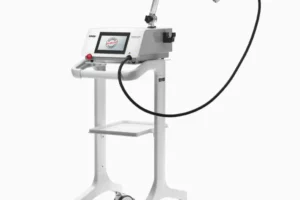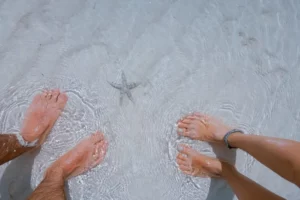What is Plantar Fasciitis?
Your plantar fascia is a strong band of tissue that supports the arch of your foot and also acts as a shock-absorber in your foot. The most common cause of Heel Pain in adults is Plantar Fasciitis, which is now more accurately referred to as Plantar Fasciopathy. This is due to the fact that research has shown the condition to be more degenerative in nature than inflammatory, which has affected the way it is now treated. Typically, sufferers of the condition will describe intense pain in the heel first thing in the morning or after periods of rest which eases with activity.
What causes it?
Plantar Fasciitis is caused by abnormal forces on the foot. Contributing factors are obesity, weight gain, jobs that require a lot of walking or standing on hard surfaces, badly worn shoes with little support, and also inactivity. As a result of these forces, with every step the Plantar Fascia (band of tissue under the foot) is being overloaded, resulting in irritation and pain at the attachment of the fascia into the heel bone. In some cases the pain is felt under the foot, in the arch.
What are the treatment options?
- Custom foot orthoses which will address any foot posture issues or dysfunctional gait patterns that are affecting your plantar fascia function.
- They will also work to decrease tissue stress on the injured structures in the heel to help resolve your painful symptoms.
- Exercise rehabilitation which will be structured in a way to progressively increase your plantar fascia’s tolerance to loading.
- The exercise programme that you learn will not only help rehabilitate you but can also help minimise further recurrences of the condition, keeping you symptom free over the long term.
- Extracorporeal Shockwave Therapy helps by accelerating healing in the injured tissues and reducing painful symptoms. It also stimulates blood flow and healing factors to the site of injury.
- Most people experience a significant reduction in painful symptoms following Extracorporeal Shockwave Therapy.
- Taping & Strapping can be used to support the foot and reduce stress on the injured tissue structures over the short term and help you resume normal activity with a reduction in symptoms.
- Foot mobilisation techniques can be effective in improving foot function and reducing painful symptoms especially where the foot as adopted an altered gait in response to pain and injury.
- Injection therapy (Referral to our Consultant Partner) can be used where conservative and non invasive methods of treatment have not adequately resolved your symptoms. Steroid injections can be effective in breaking a pain cycle.
Try these first-line exercises at home.
 Stretch your calves.
Stretch your calves.
Stand an arm’s length from a wall. Place your right foot behind your left. Slowly and gently bend your left leg forward. Keep your right knee straight and your right heel on the ground. Hold the stretch for 15 to 30 seconds and release. Repeat three times. Reverse the position of your legs and repeat.
 Grab a chair and stretch your plantar fascia. These three seated stretching exercises will also help relieve plantar fasciitis. Remember to sit up straight while you do them. While seated, roll your foot back and forth over a frozen water bottle, ice-cold can, or foam roller. Do this for one minute and then switch to the other foot.
Grab a chair and stretch your plantar fascia. These three seated stretching exercises will also help relieve plantar fasciitis. Remember to sit up straight while you do them. While seated, roll your foot back and forth over a frozen water bottle, ice-cold can, or foam roller. Do this for one minute and then switch to the other foot.
 Next, cross one leg over the other for the big toe stretch. Grab your big toe, pull it gently toward you, and hold for 15 to 30 seconds. Do this three times, then reverse and do the same with the other foot.
Next, cross one leg over the other for the big toe stretch. Grab your big toe, pull it gently toward you, and hold for 15 to 30 seconds. Do this three times, then reverse and do the same with the other foot.

For the third seated exercise, fold a towel lengthwise to make an exercise strap. Sit down, and place the folded towel under the arches of both feet. Grab the ends of the towel with both hands and gently pull the tops of your feet toward you. Hold for 15 to 30 seconds and repeat three times.



